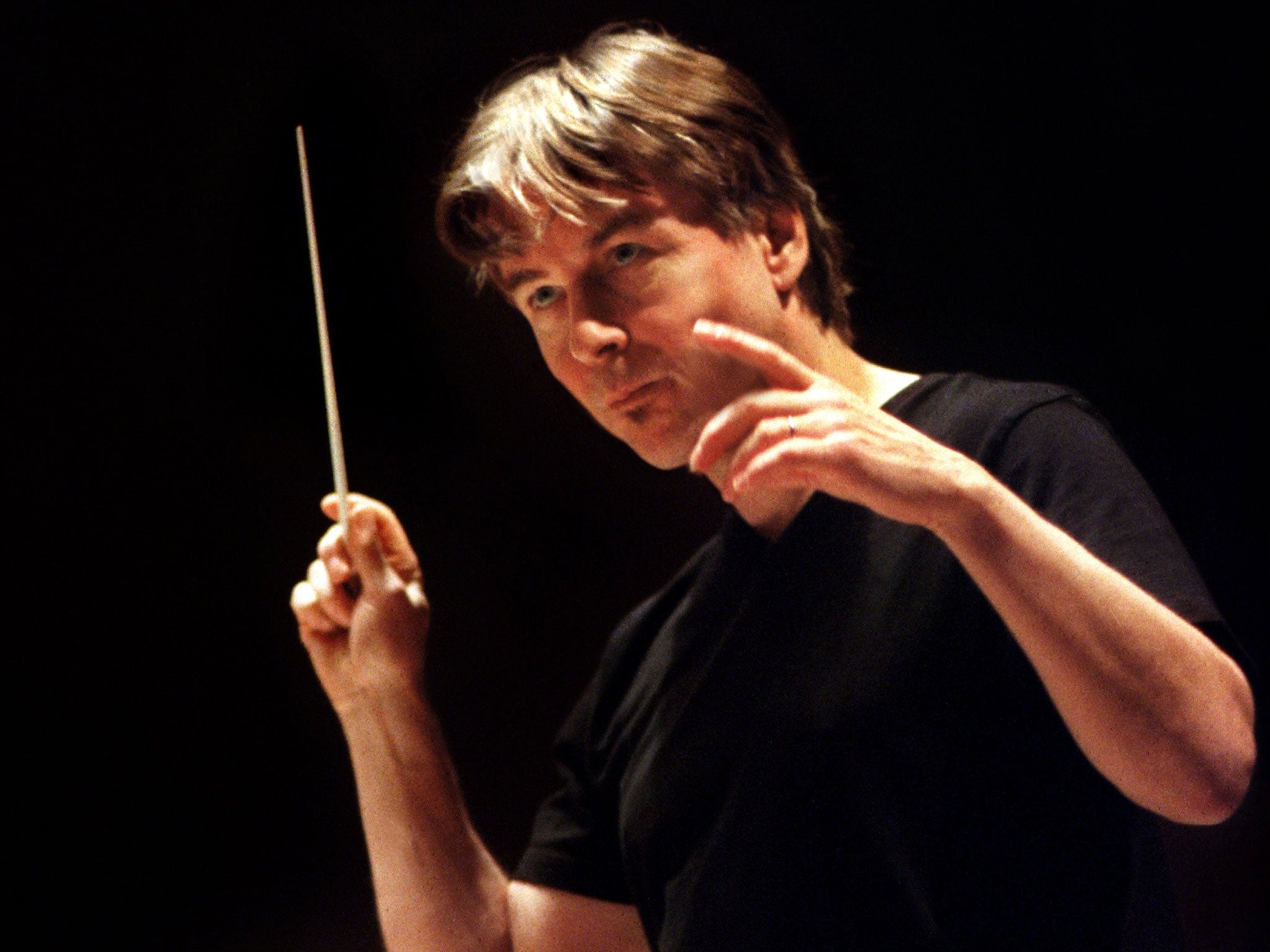Classical review: Philharmonia/Salonen - Esa-Pekka makes his case for Lutoslawski the Great
Royal Festival Hall, London

Your support helps us to tell the story
From reproductive rights to climate change to Big Tech, The Independent is on the ground when the story is developing. Whether it's investigating the financials of Elon Musk's pro-Trump PAC or producing our latest documentary, 'The A Word', which shines a light on the American women fighting for reproductive rights, we know how important it is to parse out the facts from the messaging.
At such a critical moment in US history, we need reporters on the ground. Your donation allows us to keep sending journalists to speak to both sides of the story.
The Independent is trusted by Americans across the entire political spectrum. And unlike many other quality news outlets, we choose not to lock Americans out of our reporting and analysis with paywalls. We believe quality journalism should be available to everyone, paid for by those who can afford it.
Your support makes all the difference.Two cellos in crepuscular counterpoint, a creeping melody of tritones and semitones, a lament of baleful intensity from a string orchestra divided into 10 parts. Woven Words, Esa-Pekka Salonen's series of concerts with the Philharmonia to mark the centenary of the birth of Witold Lutoslawski, opened with a work written in memory of another laureate of shadows and sorrows, Béla Bartók. Commissioned for the 10th anniversary of Bartók's death but only completed in 1958, Lutoslawski's Musique funèbre is a work of extraordinary refinement, intimate and immense, its sepulchral pulse strong and slow through an arc of fragmented dances, flecked spiccato, dusty pizzicato, gauzy tremolandi and fevered trills.
Born to a history of invasion and occupation, Cold War and curfews, Lutoslawski was a sane man in an insane world. If Woven Words cannot make the case for his inclusion among the very greatest composers of the chimerical, polystylistic sprawl of the last half of the 20th century, then nothing can. Along with the nocturnal shiverings of Bartók, we have glints of Ligeti's astral imaginings, the attenuated keening of Shostakovich's late quartets, the lush chromatics of Szymanowski, and a dry but generous wit. Written in 1988 for Krystian Zimerman, who performs it here, the Piano Concerto is a work that plays with the listener's expectations, that opens with woodwind figures that flutter and flirt like Art Nouveau dryads then sharpen into clownism. The contours and conventions are those of a 19th-century concerto, but spiked with slapstick triplets and self-mocking asterisks.
This is a beauty that confounds with contrasts, sparkling and balletic under Zimerman's fingers. Salonen's impeccable sense of pace and balance continued in Ravel's Daphnis et Chloé, its glittering artificiality echoed in the uniform hand and arm movements of the Philharmonia Voices. Never has the Royal Festival Hall sounded so radiant, so theatrical.
Every note in the Philharmonia's performance had a definite ending. The relationship between the last nanosecond of sound and the silence that follows it is of crucial importance in communicating a musical idea, and on the previous night, as Sir Simon Rattle conducted the Orchestra of the Age of Enlightenment (Royal Festival Hall, London), the measured silences in Mozart's Symphony No 39 had something of the same quality. This is music many of us know too well to hear properly, yet nothing was taken for granted. Contrasts were sharply defined in the opening Adagio, the upper strings a mist of greys over the purposeful tread of the bassoons. The Allegro sprang into life with the report of the kettledrum, the melody warmed by the second violins. The forces were small, the ideas big, with a Beethovian sense of spaciousness and suspense. Rattle's subtle adjustments of tempi in the Andante, the rhetorical weighting of the repeated chords, the perfumier's blend of flute, clarinets and bassoons, the whirling physicality of the Menuetto and the vigour of the Finale thrilled.
Sadly, energy flagged in the harmonic ambiguities of Symphony No 40. The first movement was a fraction too slow to conform to the period instruments norm, a fraction too fast to match the grandeur achieved in No 39. Intelligent work from the violas and oboes compensated for untidiness elsewhere.
There are always moments to treasure in this orchestra's work, the cheerful interplay of two clarinets, the edginess of the natural brass, the earthy grunt of the double-basses. But even feminine endings need careful punctuation, especially in the animated colloquy of fugal writing with its commas, semi-colons and full-stops. The OAE's default phrasing is binary, ending either in exclamation marks or ellipses. Though the textures of Symphony No 41 were alluring, orchestra and conductor had peaked too early to complete their argument persuasively. There is no closure in the last movement of Mozart's last symphony, no sense of finality, just another point in a journey that an 18-year-old named Ludwig van Beethoven would continue in the next century.
'Woven Words' (0844 875 0073) continues till 6 Feb
Critic’s choice
Daniel Harding directs the LSO in two programmes of music by Sibelius, Beethoven and Mark-Anthony Turnage at London’s Barbican Hall, including Turnage’s trumpet concerto with Håkan Hardenberger (Tue) and the world premiere of Speranza (Thu). David Pountney’s production of Berg’s tart-without-a-heart opera, Lulu, opens at the Wales Millennium Centre, Cardiff (Fri), heralding a bold new chapter in Welsh National Opera’s history
Join our commenting forum
Join thought-provoking conversations, follow other Independent readers and see their replies
Comments